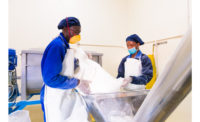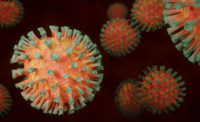Cold Foods Supply Chain May Spread COVID-19, Testing Methods Analyzed

A recent study describes the safety risks associated with the COVID-19 virus in the cold foods supply chain, as well as explores prevention and detection strategies. The study’s researchers state that, while human-to-human transmission is still the main way that the COVID-19 virus (coronavirus) spreads, there is evidence of the cold foods supply chain contributing to the transmission of the virus over long distances.
According to the study, the COVID-19 virus can survive for long periods of time on fish, meat, poultry, and other foods or food packaging that are stored at temperatures below 4 degrees Celsius (39.2 degrees Fahrenheit). Additionally, China has reported several infections that were caused by imported, cold products. Live coronavirus has also been detected on and isolated from the packaging of imported, frozen cod. While the study calls for additional research into the frequency of coronavirus contamination on food packaging and the virus’ activity in the cold foods supply chain, the researchers state that, based on the current evidence, it may be sensible to employ quarantine measures for imported, cold foods.
Mitigating the spread of the COVID-19 virus in the cold foods supply chain begins with executing appropriate control steps at several points: acquisition of raw food materials, processing, packaging, transportation, retail, and consumer preservation. The study stressed the importance of workers along the supply chain exhibiting stellar personal hygiene behaviors and precautions. Constant, thorough sanitization of surfaces in the supply chain is also critical, as is the availability of personal protective equipment and hygiene tools. Sanitary, appropriate food packaging can also be useful in reducing the transmission of the virus through the cold foods chain, but the study notes that strengthening coronavirus testing on cold-chain foods is an important technological approach that can help ensure food security.
The study mentions that, in comparison to traditional food testing methods, the detection of coronavirus on cold foods requires more stringent sampling methods, detecting conditions, testing times, anti-interference capability, and equipment portability. In its discussion of potential testing methods for COVID-19 in the cold foods supply chain, the study highlighted two categories: nucleic acid testing methods and immunological testing methods.
Nucleic acid testing is the “gold standard” for coronavirus detection in food contexts, which the study lauds as the “most direct and essential” pathogenic evidence for food contamination. Types of nucleic acid testing methods include: polymerase chain reaction (PCR) techniques, reverse transcription loop-mediated isothermal amplification (RT-LAMP), CRISPR-based systems, microfluidic biochips, and whole genome sequencing (WGS). Although they are often used for food safety testing and monitoring in many parts of the world, the study notes several drawbacks to the use of PCR and WGS methods for detecting the COVID-19 virus in the cold foods supply chain. Due to cost, portability, complexity, sensitivity, and time factors, WGS and PCR are less-favorable methods for testing and analyzing coronavirus in the cold foods chain than microfluidic biochips, CRISPR-based systems, or RT-LAMP techniques.
Immunological testing methods can detect whether foods—mainly meats—are contaminated by the COVID-19 virus by identifying the pathogen’s antigen biomarker. The study discusses three immunological testing methods: antigen tests, serum antibody tests, and cytokine storm assays. While all three methods have unique benefits, serum antibody tests and cytokine storm assays cannot be applied to plant foods due to their inability to undergo an immune response to produce antibodies. Regardless, the study suggests that serum antibody tests may be the most promising technique for detecting COVID-19 in the cold foods supply chain, aside from its lack of portability. Biosensor-enabled antigen tests and cytokine storm assays are comparably promising in the detection of coronavirus on cold-chain foods, but cytokine storm assays have a wider detection range, higher sensitivity, and much lower specimen dosage.
Although no evidence suggests that COVID-19 contamination causes foodborne illness, the study states that, even in a post-pandemic world, the cold foods supply chain still embodies the optimal conditions for spreading the COVID-19 virus and may cause local outbreaks. The study concludes that the mainstream pathogen detection method for foods, RT-PCR, does not meet the requirements for COVID-19 testing in the cold foods chain. However, it is still necessary to stop the spread of coronavirus through the cold foods supply chain by utilizing effective screening measures.
Looking for a reprint of this article?
From high-res PDFs to custom plaques, order your copy today!






